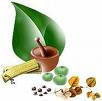 A herb is a plant that is valued for qualities such as medicinal properties, flavour, scent, or the like. This has been known for thousands of years and it worth just looking back in time where in some cases the use of herbs hasn't changed much.
A herb is a plant that is valued for qualities such as medicinal properties, flavour, scent, or the like. This has been known for thousands of years and it worth just looking back in time where in some cases the use of herbs hasn't changed much.Historically herbs have always played a part in society. The study of herbs dates back over 5,000 years right back to the Sumerians. They had recorded proven medicinal uses for herbs such as laurel, caraway, and thyme. The Ancient Egyptians used herbs for medicine of 1000 BC. Evidence of the use of garlic, opium, castor oil, coriander, mint, indigo and other varieties of herbs used for medicine. In the Bible from The Old Testament is indeed testament that herbs were used and cultivated. Typical herbs that were used included andrake, vetch, caraway, wheat, barley, and rye.
Going back to around 1900 BC, the Indian Ayurveda had been using herbs such as turmeric and curcumin for medicinal purposes. There are many other herbs that have been recorded in Ayurveda. Later on the Charaka and Sushruta both Indian herbalists are evident around 1000 BC. The Sushruta Samhita in the 600 BC describes over 700 medicinal plants as well as 64 preparations from mineral sources. T
 his for its time was a comprehensive catalogue of the use of herbs.
his for its time was a comprehensive catalogue of the use of herbs.In China the first herbal book called the Shennong Bencao Jing was written during the Han Dynasty. However this dates back to 2700 BC. It lists 365 herbs used for medicine with instructions and procedures for their uses. Generations beyond this in China increased the reference book culminating in a republished edition called 'Treatise on the Nature of Medicinal Herbs.' This was finalised in 700 AD and is still used today as a reference.
Ancient Greeks and Romans made good use of medicinal use of herbs. Most of their practices are recorded and preserved the writings of Hippocrates. Galen was probably the most famous as he provided many foundations for modern day medicine we use now.
 Hippocrates taught the use of a few simple herbal drugs alongside fresh air, rest, and proper diet for a healthy life. Nothing much has changed with advice in the 21st Century! A contemporary of Hippocrates was Galen, his view was to use large doses of drug mixtures which also included plant, animal and mineral ingredients.
Hippocrates taught the use of a few simple herbal drugs alongside fresh air, rest, and proper diet for a healthy life. Nothing much has changed with advice in the 21st Century! A contemporary of Hippocrates was Galen, his view was to use large doses of drug mixtures which also included plant, animal and mineral ingredients.  He drafted the first European treatise on the properties and uses of medicinal plants called 'De Materia Medica'. In 100 AD, yet another Greek, Dioscorides, composed a compendium of more that 500 herbal plants, a masterpiece of reference to herbs that stood firm right through to the 17th Century.
He drafted the first European treatise on the properties and uses of medicinal plants called 'De Materia Medica'. In 100 AD, yet another Greek, Dioscorides, composed a compendium of more that 500 herbal plants, a masterpiece of reference to herbs that stood firm right through to the 17th Century.The fascination of herbs stands firm throughout time, but even today we are still finding new uses and new undiscovered herbs that continue to improve the health of those who use them.



























